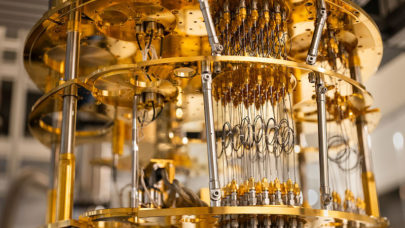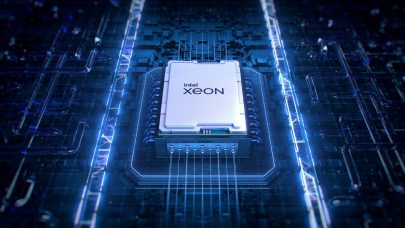AMD has announced an update to their Opteron 6200 family aimed at HPC and performance-driven enterprise applications. The new 16-core Opteron 6278 and 6284 SE processors fall under the “Bulldozer” architecture, sporting similar core density and cache as their predecessors. The company is looking to continue a healthy competition with Intel, which recently added a handful of 8-core, 16-thread processors to their “Sandy Bridge” E5 lineup last month.
 At first glance, the Opteron updates seem nearly nonexistent. The 6284 SE clocks in at 2.7 GHz, with a TDP of 140 watts, while the 6278 runs at 2.4 GHz and maxes out at 115 watts. Aside from a 100 MHz speed bump, both chips have the same specs as their 6276 and 6282 SE predecessors. Core count, cache and power consumption all remain the same.
At first glance, the Opteron updates seem nearly nonexistent. The 6284 SE clocks in at 2.7 GHz, with a TDP of 140 watts, while the 6278 runs at 2.4 GHz and maxes out at 115 watts. Aside from a 100 MHz speed bump, both chips have the same specs as their 6276 and 6282 SE predecessors. Core count, cache and power consumption all remain the same.
HPCwire spoke with Michael Detweiller, product manager of AMD’s server group, who described the move as a standard procedure. “We saw an opportunity to get the additional frequency while staying within the existing power ranges, so basically this is adding performance without adding power consumption,” he explained.
According to AMD, a dual-socket server with a pair of 6276s can perform at 239 gigaflops. The new 6278 CPUs can run 4.6 percent faster, delivering 250 gigaflops with the same dual-socket configuration. Again, the performance improvement is minimal, but since the power draw was kept constant, flops per watt has been improved.
The chipmaker also introduced three new 4200 series Opterons, the 4276, 4240, and 4230. Like their 6200 brethren, these chips are also 100 MHz faster than their predecessors, while holding to the same TDP. The 4200s, which max out at 8 cores, are aimed at more general server duty, like cloud computing, where performance per watt is the driving criteria.
When asked about the motivation to go ahead and add these chips to the family, Detweiller said that vendors and customers expressed interest in the new offerings “Basically it was clear that there was excitement from both our end-user community as well as our OEMs,” he said.
Apparently, one of these OEMs is HP. This morning’s announcement mentioned that HP plans to incorporate the new 6200 parts into their ProLiant Gen8 server family. The new models include the ProLiant Gen8 DL385p, a 2U rack server aimed at high performance computing, virtualization, and database applications, and the ProLiant Gen8 BL465c blade server, also targeting those same workloads. The BL465c is the obvious choice for computational density; a fully outfitted rack will house 2,000 cores.
Dell is also expected to update its Opteron-based server portfolio with the new chips. That includes the PowerEdge C6145, C6105, R415, R515, R715, R815 and the M915.
Detweiller declined to comment about current or future HPC users looking to employ the updated 6200 chips. Currently, seven TOP500 systems run Bulldozer processors, including the number three-ranked Jaguar supercomputer at Oak Ridge National Lab. It’s conceivable that the new 6284 SE chip will power Jaguar’s next iteration, known as Titan. That system will be a contender for the world’s fastest supercomputer when it’s completed later this year.
AMD would certainly appreciate the recognition of powering the top system. But Intel has continued to outpace AMD’s top-shelf processors. The recently introduced quad-socket 2.7 GHz Xeon E5-4650 provides a larger cache and does so with 10 less watts than the similarly clocked Opteron 6284 SE. Likewise, the 2.4 GHz Xeon E5-4640 draws 20 less watts than its Opteron 6278 competition.
At a given clock speed, the theoretical FP performance between the two architectures should be on par. That’s because even though the 6200 parts sport twice as many cores as their Xeon counterparts, the latest E5 architecture is able to retire twice the number of floating point ops per cycle.
And if you’re looking for maximum speed, Xeon is usually going to be the first choice. For its 8-core CPUs line-up, Intel offers 2.9 GHz and 3.1 GHz dual-socket parts that have no real equivalent on the Opteron side, at least from a floating-point performance perspective.
Of course, application performance is going to vary quite a bit, based on other CPU attributes (not to mention system configuration). For example, the E5 Xeons include on-chip support for the faster PCIe 3.0 interface, something AMD has yet to implement for its Opteron line.
On the other hand, any advantage that Intel has comes at a significantly higher price. For example, the E5-4650 costs $3,616 compared to $1,265 for AMD’s 6284 SE. The difference is multiplied when outfitting a quad-socket system, with the Intel CPUs tallying $14,464 per node, as compared to the Opteron version at $5,060.
AMD is well known for undercutting Intel on price, even to the detriment of its margins on these high-value server parts. “Our value proposition hasn’t changed,” said Detweiller. “We are still the world’s best price-performance x86 server processor. That story doesn’t change with these chips, it only increases.”




























































